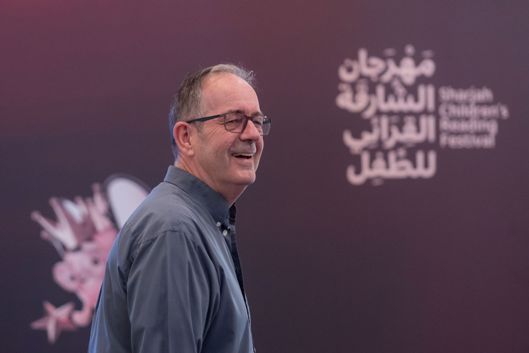Writers of all genres are engaging and enthralling the young visitors at the 14th Sharjah
Children’s Reading Festival with interesting information about their craft and their
creative processes. Among them, British authors Humza Arshad and Ross Welford
gave out tips on writing children’s stories and fiction to their rapt listeners.
While Arshad pens the Little Badman series of children’s novels based on his own life,
family and friends, Welford is a popular author of sci-fi and fantasy children’s books,
such as Time Travelling With A Hamster and The Monkey Who Fell From The Future.
Here are five writing tips from each author on penning stories for children:
Humza Arshad and His Brave Approach
- Find your motivation: What is it that you want to achieve with your stories? For
Arshad, it is all about making people laugh. So consider your end goal: do you
want to thrill your reader, scare them, make them nostalgic, take them to fantasy
worlds, teach them about the past or history etc? Don’t make it so much about
identifying your genre, instead think about what you want your reader to feel. - Look at your surroundings, your family and your circles for inspiration. You write
best when you write about things and people you know. Create characters,
locations and stories that you can relate to. You have your unique background
and environment to tap into, so always be true to yourself and don’t “be inspired”
by other works or writers.
- Establish the tone of the story right away. It can be a struggle and it mostly
comes with practice, but good stories always have a strong habit of reeling in the
reader, making them “settle into it” and give them a comfortable sense of where it
is going right away. This is not to say you should use cliches or the same old
plots. Don’t be predictable, of course, but offer readers a sense of familiarity as
well. - Think about the characters first, then the structure of the story. The narrative can
follow the personalities. It is they who your readers will like or dislike or identify
with or offer new perspectives, so they must always lead the narrative, which
must serve the characters. Other elements such as jokes and plot devices can
be added next. - Always be confident about your work. Not everyone is going to like your stories
or writing, and that’s okay. Your work is about your creative journey, expression
and progression, so always give it your best and work hard. Everything you
create is your masterpiece.
Ross Welford and the Magic of Crafting Stories
- The characters: They are the absolute heart of any story. Without them, you have
absolutely nothing or no one for the story to happen to. Think up the characters,
their traits, personalities and inclinations well, and you have solved most of the
story-writing puzzle. - The problem: You have to give your characters a problem – without one, it’s
going to be boring. If you write about someone and their regular, day-to-day
happenings or routine, that hardly makes for an exciting story. Instead, you’ve
got to invent the characters, give them a problem and see where they end up. - The quest: Many great stories work around a central thing or person that are lost
- like the ring in Lord of the Rings, Snow White, Hansel and Gretel, etc. Give the
characters a mission to find whatever it is that is lost, or go on a search. It could
also be something they are seeking in life, a purpose, a goal or anything else.
Remember, you are a member of the Library of Imagination.
- The timing: You can write the best characters or storyline in the world, but it is
pointless if you can’t make things happen at the right time. Whether it’s a
shocker, surprise, a dramatic entry or a plot twist, timing is everything and it must
take place at the right moment in the story, not too soon or too late. - The rewriting: “The best writing is rewriting.” – EB White, author of Charlotte’s
Web and Stuart Little. All the best stories are rewritten plenty of times, whether
by the writer or the work’s editor, and there is no harm in that. Write, rewrite and
rewrite again – this is the right way to ensure you create your best work.
